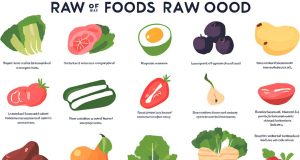How Do Beginners Get Into Ketosis?
A No-Fluff Guide to Starting Strong on Keto
Thinking about trying keto but feeling overwhelmed? Don’t worry—you’re not alone. Everyone has to start somewhere, and getting into ketosis is actually simpler than it sounds once you know the steps.
This guide is your go-to playbook for beginners who want to jump into fat-burning mode the right way.
First of All… What Is Ketosis?
Ketosis is when your body switches from burning carbs (sugar) to burning fat for fuel. Instead of relying on glucose, your liver starts making ketones, which become your new energy source.
When you’re in ketosis, your body becomes a fat-burning machine—literally.
So, How Do You Get There?
Here’s a step-by-step guide to help you get into ketosis fast and safely:
1. Cut Your Carbs Way Down
This is the key. You’ve got to limit your carb intake to 20 to 50 net grams per day—that’s total carbs minus fiber.
Cut out:
Bread, pasta, rice, cereal
Sugar, soda, and most snacks
Potatoes, corn, and sweet fruits
Instead, eat:
Meat, eggs, and seafood
Leafy greens and low-carb veggies
Cheese, butter, and oils
Nuts, seeds, and avocados
Think: “No sugar, low starch, high fat.”
2. Eat More Healthy Fats
Fat is your fuel on keto. You’re replacing carbs with calories from fat, so don’t be shy with:
Olive oil, avocado oil, coconut oil
Butter and ghee
Fatty meats (hello, bacon!)
Avocados, cheese, nuts, and seeds
Aim for fat to make up 70–75% of your daily calories.
3. Boost Electrolytes to Avoid the “Keto Flu”
When your body loses carbs, it also flushes out water and important minerals. That’s what causes the “keto flu”—headaches, fatigue, muscle cramps, and brain fog.
Beat it by:
Drinking plenty of water
Adding sea salt to food (or sipping broth)
Taking magnesium and potassium supplements if needed
4. Move Your Body
Light exercise can help deplete your carb stores faster, which gets you into ketosis sooner.
You don’t need to go hardcore—walk, lift weights, ride a bike, or stretch. Just get moving.
5. Try Intermittent Fasting (Optional, but Effective)
If you’re up for it, skipping breakfast or eating in a shorter window (like 12pm–8pm) can speed things up. Fasting forces your body to tap into fat stores and produce ketones faster.
Not required, but it can give you a solid jumpstart.
How Long Does It Take to Get Into Ketosis?
Most beginners reach ketosis in 2 to 7 days—sometimes quicker if you’re strict with carbs and active.
Your body will give you some signals, like:
Less hunger
Dry mouth or “keto breath”
More energy or mental clarity
A quick drop in water weight
You can also test with:
Urine strips (cheap, easy, not super accurate)
Blood ketone meters (most accurate)
Breath testers (pretty reliable)
Pro Tips for a Smooth Start:
Plan meals ahead (trust me, it saves you)
Use a food tracking app to monitor carbs
Keep keto snacks on hand (nuts, cheese, hard-boiled eggs)
Stay consistent—it’s not about being perfect, just steady
Final Take
Getting into ketosis isn’t complicated—it just takes a little prep and a shift in mindset. Once you’re in, the benefits kick in fast: better energy, less hunger, and steady fat-burning.
Start simple. Stick with it. And don’t be afraid to eat the bacon. 🥓







